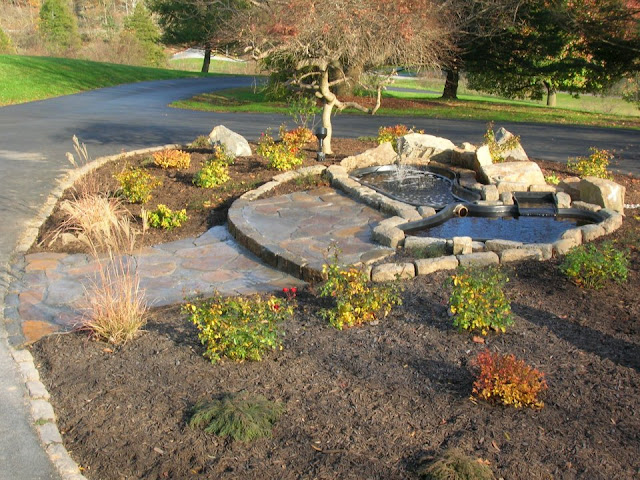Winter can be rough on your homes, especially your hardscape which is perpetually exposed to the elements. When the last signs of cold weather melt away, you can find yourself heading into spring with pitted driveways, cracked asphalt and crumbling landscaping. So it’s important to make repairs before summer heats up and puts further stress on these important areas. Doing your own hardscape repairs isn’t difficult. You’ll save money, and doing it yourself gives you the opportunity to get some outdoor exercise this spring.
You may need professionals to pour new asphalt but repairing existing asphalt in your hardscape can be done by yourself. For pothole repairs, start by sweeping and removing any loose materials from the area needing repair. Next, pour ready-mix asphalt in the trouble spot and spread evenly to a depth of no more than 2 inches at a time. Use the back side of a shovel to compact the material. And since there is no oily tracking with this material, just drive over it a few times with your vehicle. The compaction causes the product to cure into an effective patch. For deeper potholes, keep repeating in 2 inch amounts until completely filled.
Patio pavers and bricks can shift, sink or raise, and even crack during a tough winter. If your hardscape has a sand underlay, fixing problems is relatively easy. For broken or cracked pavers, simply remove the damaged pieces, check that the sand is level, and fill the gap with a new paver or brick. If your patio has become uneven over time, you’ll need to lift all the uneven pavers, level the sand beneath – you may have to add sand – and then put the pavers back atop the now-level sand.
Concrete is a common hardscape material around homes across the country. Concrete driveways, walkways and steps can all succumb to cracking, crumbling, chipping and spalling after a harsh winter. Fortunately, concrete is an easy material to fix, and patching a problem while it’s small may help prevent a much costlier repair or even replacement down the road. To repair cracks of virtually any size, simply apply an easy-to-use product. Power wash cracks to remove debris. For larger fissures, it may be necessary to use a hammer and chisel to remove crumbling concrete and produce a clean, clearly delineated repair site.
For resurfacing old, damaged or spalled concrete, Flo-Coat resurfacing material by Sakrete provides an easy alternative to costly replacement. Simply remove loose materials from the surface, mix the material, dampen the concrete surface with water and pour the resurfacing material onto the concrete slab. Use a long-handled squeegee to spread the mixture evenly. Be sure to protect expansion and control joints with tape to prevent filling.
Whether your brick, stone or cinderblock retaining wall is acting as a retaining wall or simply a decorative one, moisture is not its friend. If your region has had a lot of snow this past winter, check your landscaping walls for damage such as cracks in mortar, shifted stones or crumbling bricks. Repairing cracked mortar is easy as long as the bricks or stones it secures remain in good position.
A few simple repairs will help ensure your home’s hardscape is in good shape, and ready for whatever summer weather brings.

Comments
Post a Comment